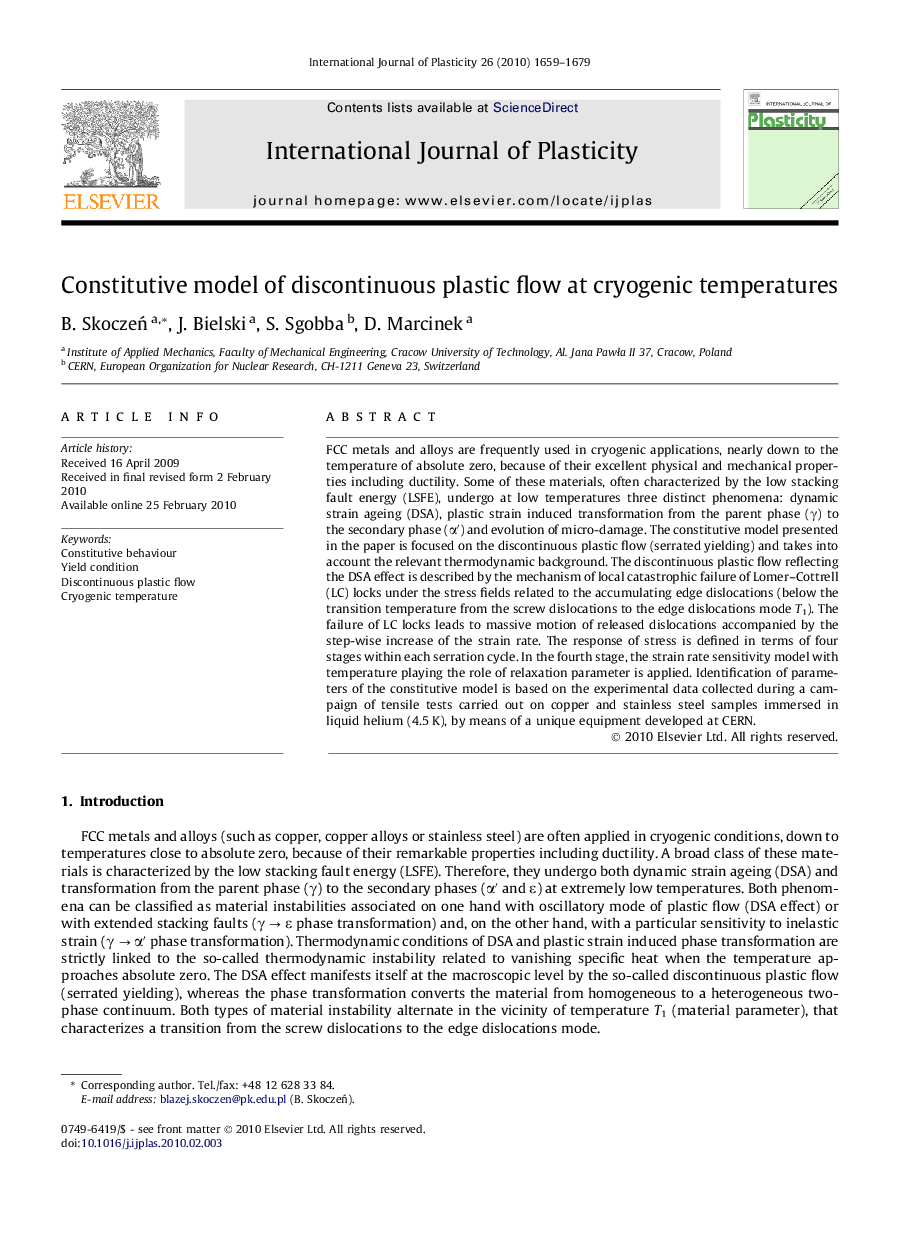| Article ID | Journal | Published Year | Pages | File Type |
|---|---|---|---|---|
| 787209 | International Journal of Plasticity | 2010 | 21 Pages |
FCC metals and alloys are frequently used in cryogenic applications, nearly down to the temperature of absolute zero, because of their excellent physical and mechanical properties including ductility. Some of these materials, often characterized by the low stacking fault energy (LSFE), undergo at low temperatures three distinct phenomena: dynamic strain ageing (DSA), plastic strain induced transformation from the parent phase (γ) to the secondary phase (α′) and evolution of micro-damage. The constitutive model presented in the paper is focused on the discontinuous plastic flow (serrated yielding) and takes into account the relevant thermodynamic background. The discontinuous plastic flow reflecting the DSA effect is described by the mechanism of local catastrophic failure of Lomer–Cottrell (LC) locks under the stress fields related to the accumulating edge dislocations (below the transition temperature from the screw dislocations to the edge dislocations mode T1). The failure of LC locks leads to massive motion of released dislocations accompanied by the step-wise increase of the strain rate. The response of stress is defined in terms of four stages within each serration cycle. In the fourth stage, the strain rate sensitivity model with temperature playing the role of relaxation parameter is applied. Identification of parameters of the constitutive model is based on the experimental data collected during a campaign of tensile tests carried out on copper and stainless steel samples immersed in liquid helium (4.5 K), by means of a unique equipment developed at CERN.
